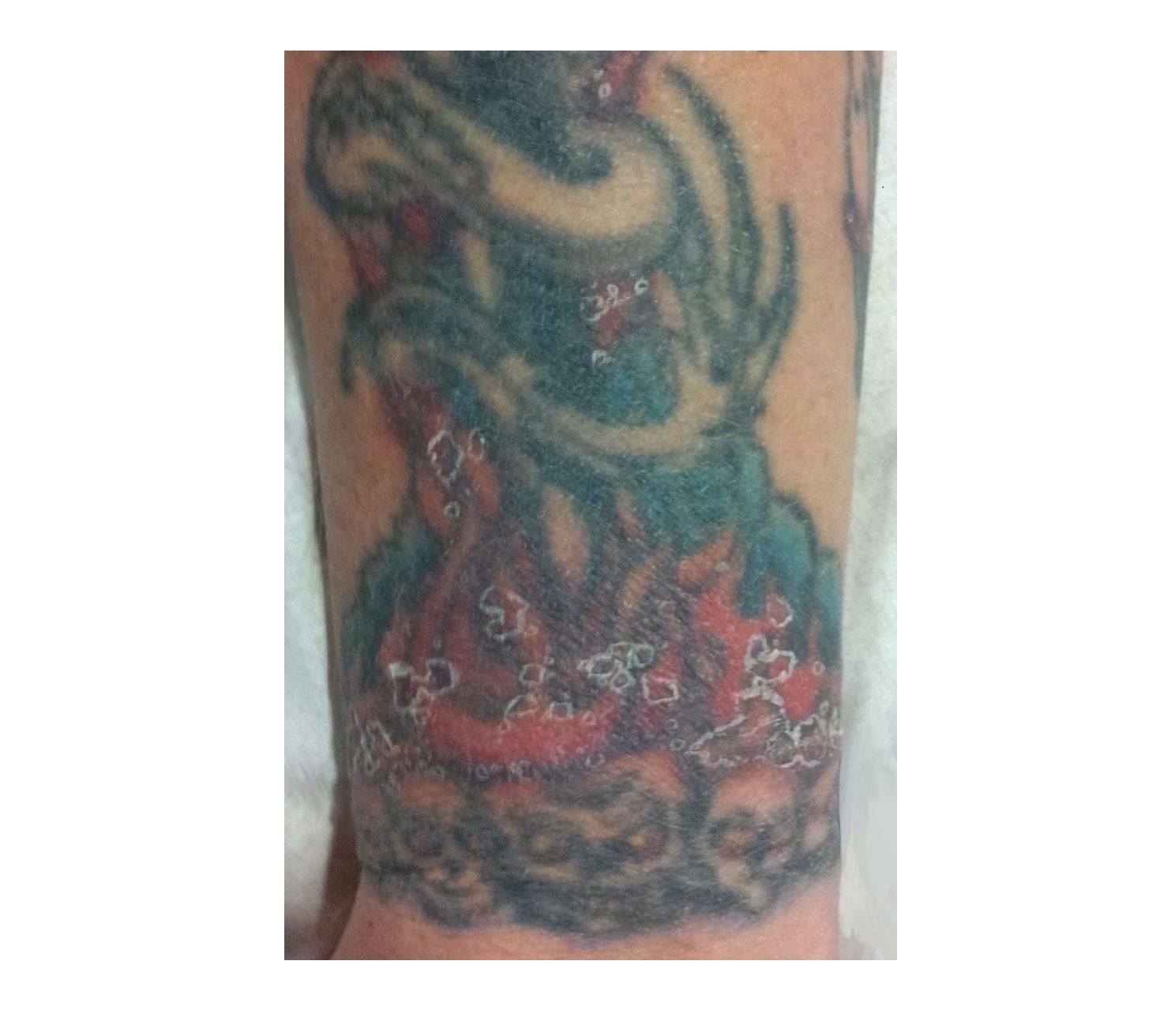Man Has Skin Reaction to Tattoo — 20 Years Later

There have been many cases of people having allergic reactions just after getting a tattoo. But for one man in England, the reaction was delayed, coming 20 years after he got his tattoo, according to a new report of his case.
The 54-year-old man had recently completed chemotherapy for the blood cancer lymphoma, and had just undergone a bone-marrow transplant using his own cells. Six days later, when his immune system was still suppressed because of the procedure, he developed a fever.
Looking for the cause of the fever, doctors found newly formed skin lesions on the red-ink parts of his old tattoo, resembling the allergic reaction that some people experience when they get a new tattoo.
"While acute red-ink tattoo reactions are well documented, a case of a tattoo reaction with a delay of more than two decades has not been previously described," said Dr. George Chapman, who treated the man. [14 Oddest Medical Case Reports]
Although most people who get such reactions to tattoo ink are allergic to one of the ingredients in the ink, this was likely not the case for this patient, said Chapman, of Churchill Hospital in England.
"Given this was a bone-marrow transplant of the patient's own bone marrow, his immune system should be near identical (in terms of what his immune system reacts to, and what it has seen before) both before and after the transplant," Chapman told Live Science in an email.
"I believe that immune-system suppression was the trigger for the reaction, Chapman said.
Get the world’s most fascinating discoveries delivered straight to your inbox.
Most likely, the tattooing done decades ago had introduced bacteria into the man's body, and those bacteria were held at bay by a healthy immune system, Chapman explained. But once the immune system was compromised by chemotherapy, those bacteria found an opportunity to cause problems.
In fact, three days later, when the patient's immune system returned to normal, the lesions healed, leaving only peeling skin behind [Image of the tattoo reaction]
The patient declined a biopsy, so it remains unknown which bacteria may have caused the reaction.
However, it is also possible that the reaction was not due to an infection, Chapman said. Rather, an ingredient in the ink might have interacted with one of the chemotherapy drugs to form a new compound. This new molecule could have then appeared new to the immune system, and caused a reaction, Chapman said.
The report was published Jan. 10 in the journal BMJ Case Reports.
Email Bahar Gholipour. Follow us @LiveScience, Facebook & Google+. Original article on Live Science.



